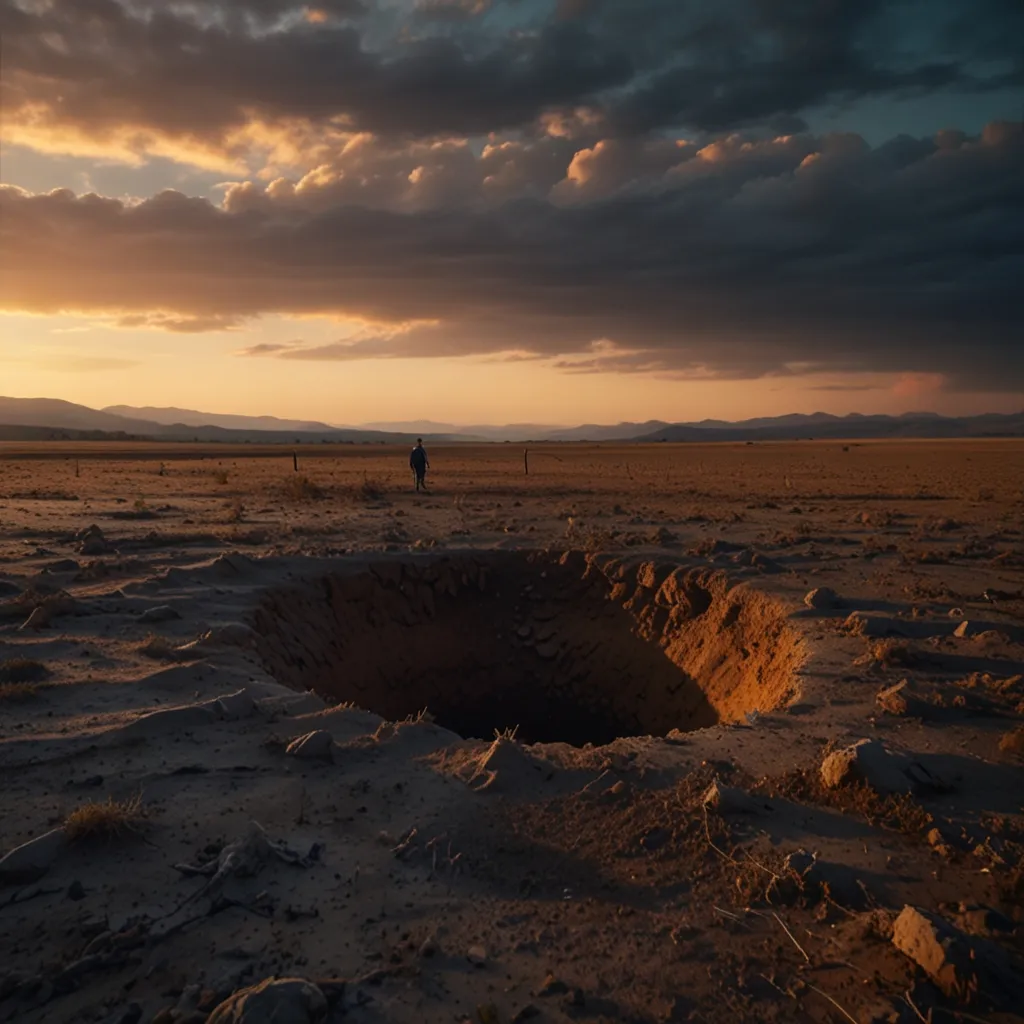As I delve into the realm of unexplained historical artifacts, I am reminded of the words of the renowned archaeologist, Howard Carter: “It is the duty of an archaeologist to understand the material he is working with, and to interpret it in the light of what is known of the period to which it belongs.” Yet, some artifacts defy this duty, leaving us with more questions than answers.
The Baghdad Battery
One of the most intriguing artifacts is the Baghdad Battery, discovered in 1936 near the ancient city of Ctesiphon in Iraq. At first glance, it appears to be a simple ceramic pot, but upon closer inspection, it reveals a copper tube and an iron rod, insulated by an asphalt stopper. The German archaeologist Wilhelm König suggested that this could have been a galvanic cell, potentially used for electroplating or some form of electrotherapy.
Imagine filling this jar with vinegar and generating a voltage difference between the copper and iron – it sounds almost like a primitive battery. But how did ancient civilizations manage to create such a device? The absence of any written records or wires to collect the power output only adds to the mystery. Could these batteries have been used for healing, as the Greeks and Romans used electrical eels to combat gout? Or perhaps they served a more theatrical purpose, making metal statues tingle when touched.
The Dropa Stones
In the remote mountains of China, another enigmatic find has sparked intense debate. The Dropa Stones, discovered in the 1930s, are a set of stone discs adorned with strange symbols and patterns. These stones are often linked to the Dropa people, an alleged ancient civilization that some believe may have had extraterrestrial origins.
The stones themselves are about 12 inches in diameter and feature a series of grooves and hieroglyphics that resemble no known language. While some claim these stones are evidence of ancient contact with otherworldly beings, others argue they are simply a hoax or a natural phenomenon. The truth remains elusive, leaving us to ponder the origins and meaning behind these mysterious discs.
The Antikythera Mechanism
Off the coast of Greece, in the depths of the Aegean Sea, lies one of the most sophisticated ancient artifacts ever discovered – the Antikythera Mechanism. This intricate device, dated to around 100 BCE, is often described as the world’s first analog computer.
The mechanism is a complex system of gears and dials that could calculate astronomical positions, predict eclipses, and even track the timing of the Olympic Games. Its precision and complexity are staggering, especially considering the technological capabilities of the time. How did the ancient Greeks develop such advanced knowledge of astronomy and engineering? The Antikythera Mechanism challenges our understanding of ancient technological capabilities and raises questions about the transfer of knowledge across civilizations.
The Piri Reis Map
In the early 16th century, a Turkish admiral named Piri Reis created a map that has become one of the most controversial cartographic artifacts in history. The Piri Reis Map depicts the Americas with remarkable accuracy, including the coastline of South America and the ice-free Antarctica.
This map predates the official discovery of Antarctica by centuries and raises questions about how such detailed knowledge was obtained. Some theories suggest that ancient civilizations may have had contact with the Americas long before Columbus, while others propose that the map is evidence of lost knowledge from a prehistoric era. The map’s accuracy and the mysteries it holds continue to intrigue historians and cartographers alike.
The London Hammer
In the heart of Texas, an unusual find has sparked debate among archaeologists and historians. The London Hammer, discovered in 1936, is a hammerhead embedded in a rock formation that dates back millions of years. The hammer itself appears to be of modern construction, yet it is encased in a mineral nodule that is half a billion years old.
How did a modern tool end up in such an ancient context? Some argue it is evidence of time travel or advanced civilizations that predate our current understanding of human history. Others dismiss it as a hoax or a misinterpretation of the geological context. The London Hammer remains one of the most baffling out-of-place artifacts, challenging our conventional views of time and technology.
The Grooved Spheres of South Africa
In the deserts of South Africa, a series of mysterious spheres have been discovered, each about the size of a baseball and featuring precise grooves and patterns. These spheres, often referred to as the “grooved spheres,” are made from a hard, fine-grained sedimentary rock that is difficult to carve.
The origins and purpose of these spheres are unknown. Some speculate they could be evidence of an advanced ancient civilization, while others believe they might be natural formations. The precision of the grooves and the uniformity of the spheres suggest a level of craftsmanship that is hard to explain given the technological capabilities of the time.
The Dashka Stone
In the depths of the Russian wilderness, a stone slab known as the Dashka Stone has been found, featuring intricate carvings that depict a map of the Ural Mountains, complete with rivers, lakes, and even what appears to be a dam. The stone is estimated to be around 100 million years old, placing it in the Cretaceous period.
How could such a detailed map be created by an ancient civilization, especially one that predates human existence? The Dashka Stone is often linked to theories of lost civilizations and advanced knowledge from prehistoric times. However, its authenticity and the accuracy of its carvings remain subjects of intense debate.
Theories and Debates
Each of these artifacts presents a unique challenge to our understanding of human history and technological development. They often spark heated debates between mainstream scientists and those who propose alternative theories.
As the famous historian, Will Durant, once said, “The story of civilization is the story of the human spirit’s struggle for enlightenment.” These artifacts remind us that there is still much to learn and discover about our past.
Impact on Our Understanding
These unexplained artifacts force us to reconsider our assumptions about ancient civilizations. They suggest that our ancestors may have possessed knowledge and technological capabilities that we have yet to fully understand.
For instance, the Baghdad Battery and the Antikythera Mechanism imply a level of scientific and engineering sophistication that was previously underestimated. The Piri Reis Map and the Dashka Stone raise questions about the extent of ancient exploration and cartography.
Conclusion
As we explore these perplexing artifacts, we are reminded of the complexity and richness of human history. They challenge our conventional narratives and invite us to think differently about the past.
In the words of the archaeologist, Zahi Hawass, “The past is a source of knowledge, and the future is a source of hope. Love of the past implies faith in the future.”
These artifacts, though unexplained, offer us a glimpse into a past that is both fascinating and mysterious. They encourage us to continue exploring, questioning, and seeking answers about the enigmatic remnants of our ancestors’ achievements.






